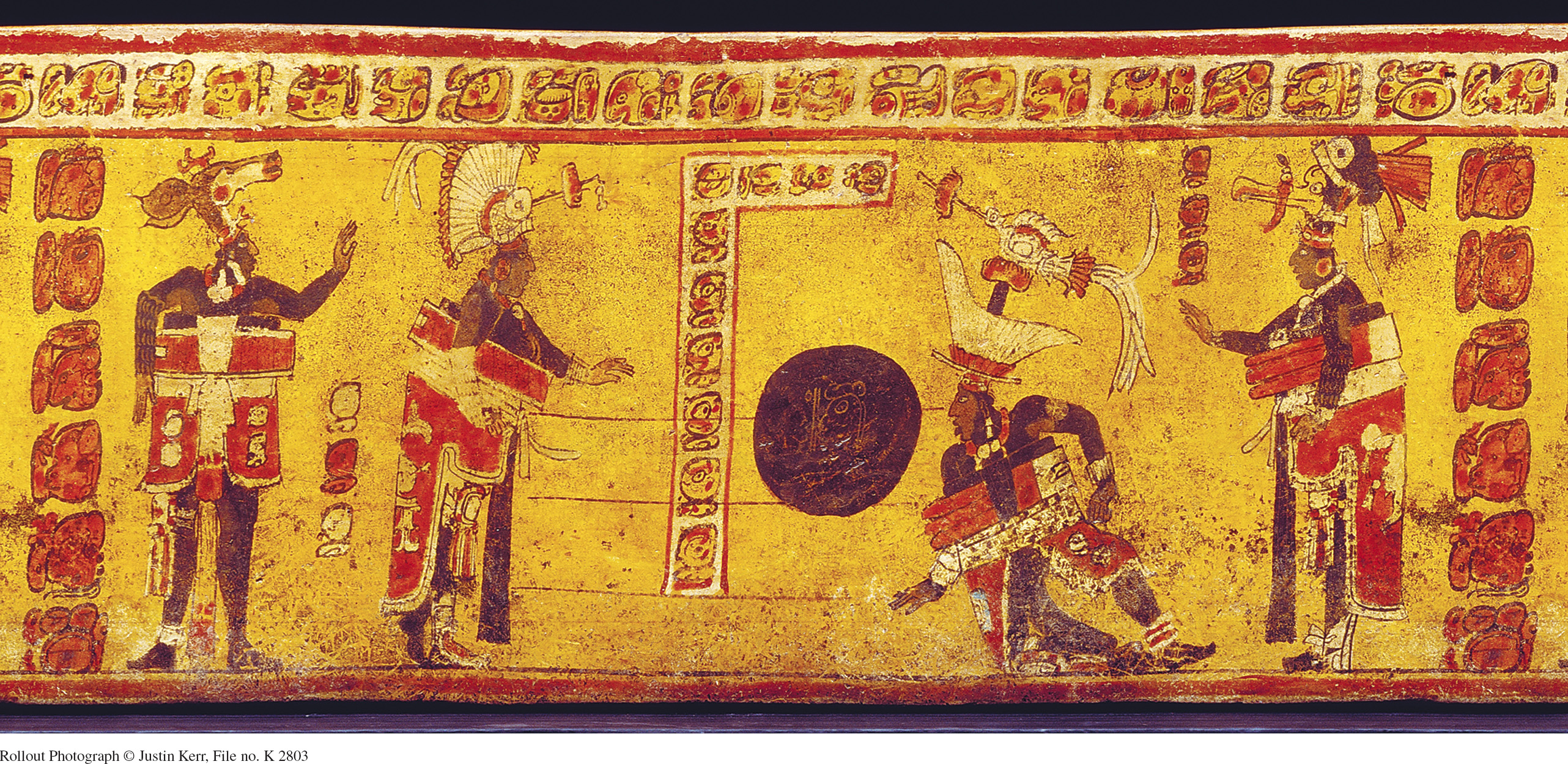Source 6.4
The Ball Game
Among the most well-
Source 6.4, a rollout of a vase dating from the seventh or eighth century C.E., depicts the ball game in action. Notice the heavy protective padding around the waist as well as the wrappings around one knee, foot, and upper arm of the two lead players. This equipment helped protect participants from the ball, which typically weighed seven to eight pounds. The two players on each side echo the Hero Twins of Maya mythology, famous ball players who triumphed over the lords of the underworld in an extended game and who were later transformed triumphantly into the sun and moon. The glyphs accompanying this image name two kings of adjacent cities, suggesting that the game may have been played on occasion as a substitute for warfare between rival cities.
Questions to consider as you examine the source:
- What might the elaborate dress of the players suggest about the function of the game and the status of its players?
- Notice the deer headdress on the player at the far left and the vulture image on the corresponding player at the far right. What do the headdresses suggest about the larger mythic context in which the game was understood?
- How might you compare this ancient Maya ball game to contemporary athletic contests? Consider the larger social meaning of the game as well as its more obvious features.
The Ball Game

Notes
- Mary Miller and Simon Martin, Courtly Art of the Ancient Maya (New York: Thames and Hudson, 2004), 63.